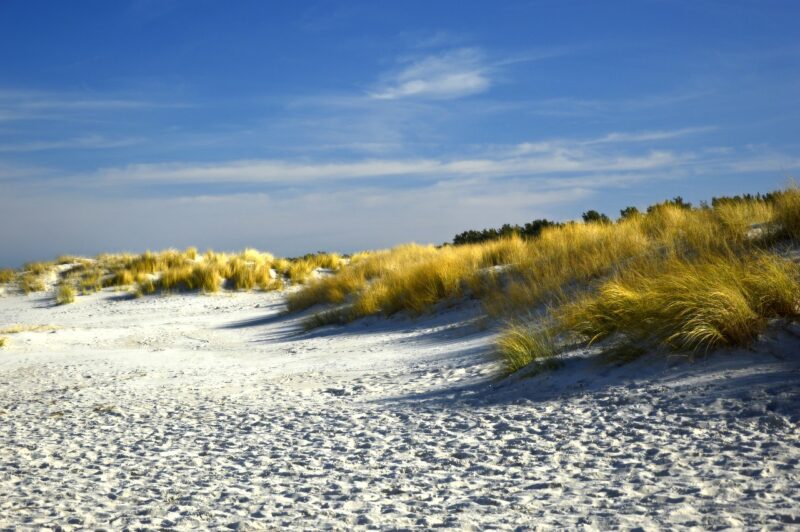Why Coastal Erosion Happens and How It Affects Shorelines
November 16, 2024

Coastal erosion is a natural process that reshapes the boundary between land and ocean, significantly impacting ecosystems, human activities, and coastal infrastructure. Understanding the causes and effects of coastal erosion is crucial for developing effective management strategies that can mitigate its adverse impacts.
—
### 1. Introduction to Coastal Erosion
Coastal erosion refers to the gradual removal of sediments and rocks along the shoreline, resulting in the recession of the coast. This process can occur over short periods, such as during a storm, or over long periods due to continuous wave action and sea-level rise.
The coastlines of the world are dynamic environments, constantly influenced by various factors, including tides, waves, wind, and human activity. Although erosion is a natural phenomenon, human practices can exacerbate its effects, leading to alarming consequences for coastal zones.
—
### 2. Causes of Coastal Erosion
Coastal erosion can be attributed to several natural and anthropogenic (human-induced) factors.
#### 2.1 Natural Causes
– **Wave Action**: The most significant factor in coastal erosion is the action of waves crashing against the shoreline. This wave action erodes sandy beaches and cliff faces, particularly during storms or extreme weather events.
– **Tides**: Changes in tidal levels can expose different parts of the shore to erosion and accretion, creating variability along the coastline.
– **Sea-Level Rise**: Climate change is contributing to rising sea levels, which increases the vulnerability of coastlines to erosion. Higher water levels allow waves to reach farther inland, eroding coastal features more quickly.
– **Storm Surges**: Severe storms and hurricanes can cause sudden and intense erosion due to elevated water levels and increased wave action.
– **Sediment Supply**: Natural processes, such as river flow and sediment transport, play a vital role in maintaining balanced shorelines. Disruptions in sediment supply, often due to dam construction or deforestation, can lead to accelerated erosion.
#### 2.2 Anthropogenic Causes
– **Coastal Development**: Construction activities, such as building seawalls, jetties, or marinas, can disrupt natural sediment flow and lead to increased erosion in nearby areas.
– **Sand Mining**: The extraction of sand for construction and industrial use can deplete the natural sediment supply, exacerbating erosion along the coast.
– **Climate Change**: Human-induced climate change contributes to extreme weather events and sea-level rise, both of which heighten coastal erosion risks.
– **Deforestation**: Removing vegetation near coastlines weakens the natural buffer that prevents soil erosion, increasing vulnerability to wave action and runoff.
—
### 3. Effects of Coastal Erosion
The impacts of coastal erosion extend beyond the loss of land. The consequences can be profound, affecting ecosystems, communities, and economies.
#### 3.1 Environmental Impact
– **Loss of Habitat**: Coastal erosion can lead to the loss of critical habitats for various species, including nesting areas for sea turtles and shorebirds. Estuaries and marshlands may also suffer, affecting biodiversity.
– **Increased Salinity**: Erosion can result in saltwater intrusion into freshwater systems, impacting aquatic habitats and drinking water sources for nearby communities.
#### 3.2 Economic Consequences
– **Property Loss**: As shorelines recede, properties close to the waterfront become at risk, leading to potential economic losses for homeowners and businesses.
– **Impact on Tourism**: Coastal areas often rely on tourism for economic support. Erosion can diminish beach quality, reducing visitor numbers and affecting tourism-driven businesses.
– **Infrastructural Damage**: Coastal infrastructure, such as roads, bridges, and public facilities, may be threatened by erosion, necessitating costly repairs or relocations.
#### 3.3 Social Effects
– **Displacement of Communities**: In severe cases, communities may be forced to relocate due to ongoing erosion, which can create social and economic challenges as residents adapt to new environments.
– **Loss of Recreational Spaces**: Erosion can lead to the loss of beaches and recreational areas, affecting the quality of life for local residents and diminishing leisure opportunities.
—
### 4. Strategies for Mitigating Coastal Erosion
Coastal management strategies aim to reduce the impacts of erosion and protect shorelines and communities. Strategies include:
#### 4.1 Natural Solutions
– **Dune Restoration**: Re-establishing and protecting coastal dunes helps absorb wave energy, reducing erosion.
– **Wetland Restoration**: Restoring wetlands can enhance natural defenses against storm surges and erosion while improving habitat for wildlife.
#### 4.2 Engineering Solutions
– **Seawalls and Groins**: Structures like seawalls and groins can protect specific areas from wave action. However, these can lead to increased erosion in adjacent areas.
– **Beach Nourishment**: This method involves adding sand to eroded beaches, replenishing their width and protecting against future erosion.
#### 4.3 Policy and Community-Based Approaches
– **Integrated Coastal Zone Management (ICZM)**: This holistic approach involves coordinating efforts among stakeholders to manage coastal resources collectively.
– **Community Engagement**: Involving local communities in decision-making processes ensures that erosion management considers ecological, economic, and social perspectives, enhancing sustainability.
—
### 5. Conclusion
Coastal erosion is an ongoing challenge significantly impacting our shorelines, ecosystems, and communities. While it is a natural process, anthropogenic factors can exacerbate its effects, making understanding and addressing this issue crucial.
Effective management strategies are needed to mitigate the impacts of coastal erosion, incorporating natural solutions, engineering interventions, and community engagement. By fostering resilience in coastal areas, we can protect not only our shorelines but also the livelihoods and ecosystems that depend on them.
As stewards of our coastlines, it is our responsibility to address coastal erosion challenges to ensure the sustainable future of our precious shorelines.







